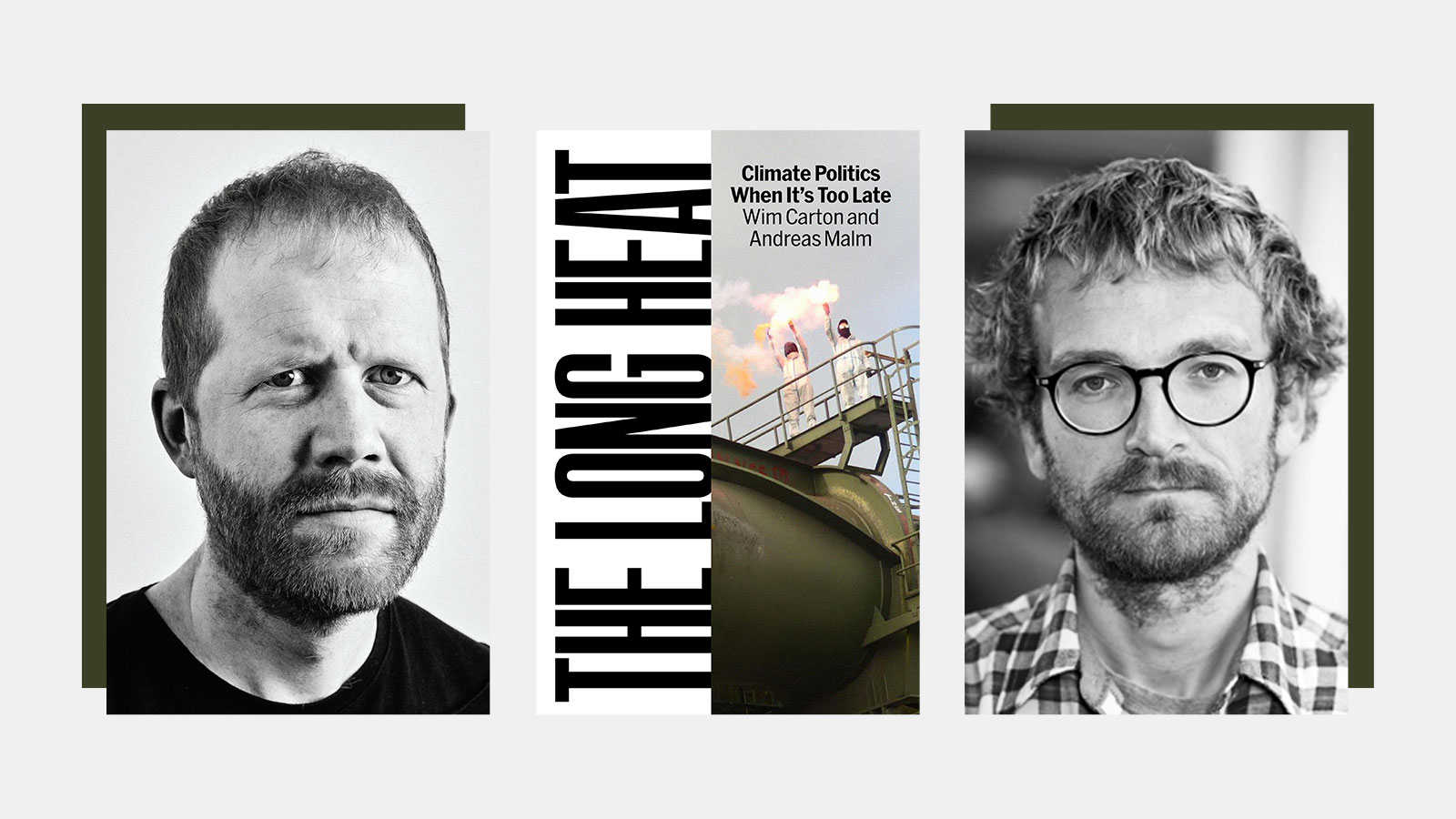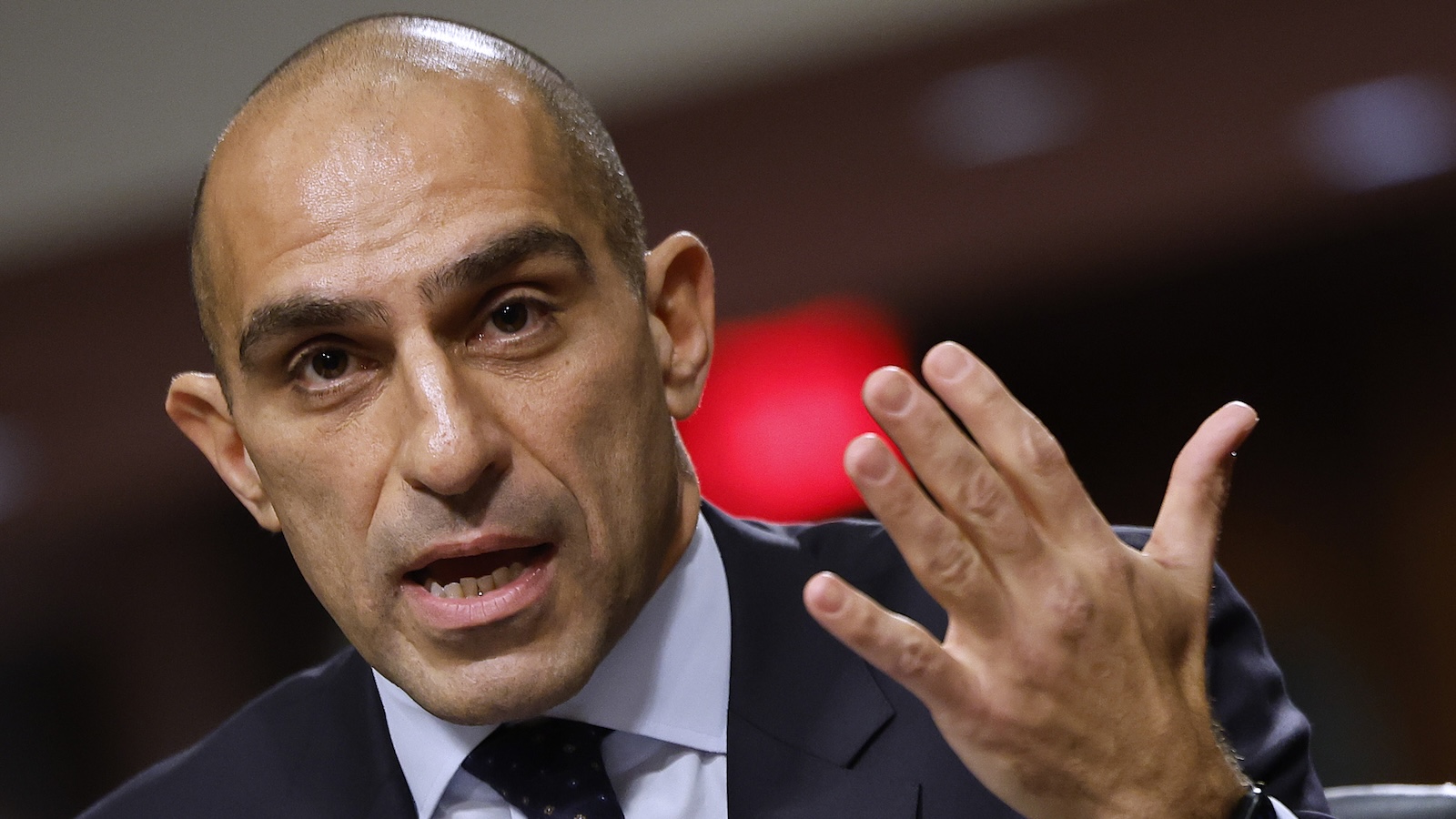In 2022, a small group of researchers came up with a bright idea: What if we were to install a network of lamps above tropical forests, flooding them with light at night in order to boost photosynthesis? Doing this in the Amazon alone, they argued, would increase plants’ uptake of CO2 by so much that it could “completely offset” humanity’s carbon emissions. Sure, they admitted in a paper they published on the idea, their plan didn’t factor in how much it would cost to install a network of millions of rainforest lamps, where the clean energy needed for all this additional electricity would come from, or how the light would probably disturb the local fauna. But the proposal certainly was “novel,” as they described it.
It may sound drastic to physically manipulate entire biomes rather than, say, stop extracting fossil fuels, but in recent years, these kinds of ideas have grown more prevalent. Other so-called “climate solutions” have envisioned removing carbon from the atmosphere by planting 1 trillion trees (which would have uncertain climate benefits and require an unrealistic amount of space), cultivating carbon-munching bacteria, or “managing” global sea level rise by building giant underwater curtains. At least one scientist has put forward the idea that we “manipulate the orbit of asteroids,” hitching them to the Earth to nudge the planet to a cooler zone farther away from the sun, despite the risk that this would eject us from the sun’s orbit.
Secure · Tax deductible · Takes 45 Seconds
Secure · Tax deductible · Takes 45 Seconds
In their new book The Long Heat: Climate Politics When It’s Too Late, the Swedish academics Wim Carton and Andreas Malm attempt to explain what’s going on. As they see it, these complicated ideas have arisen from society’s unwillingness to challenge “fossil capital,” the extensive network of infrastructure, assets, and systems owned by companies intent on preserving business interests associated with fossil fuels. That includes pipeline companies, auto manufacturers, electric utilities, banks, and more. Those seeking to address climate change have imagined fossil capital as an “unassailable background condition,” Carton and Malm write, which means they’ve had to assail something else — anything else, even if it’s the oscillation between day and night.
“Deference to the political status quo translates into reckless experimentation with ecosystems or an entire biome,” Carton and Malm write. “Because the former is unbreakable, the latter must be broken.”
The Long Heat is part two of a project that Carton and Malm jokingly dub “a Marxist IPCC report of a readable nature,” referring to the analyses regularly released by the United Nations’ Intergovernmental Panel on Climate Change. Of course, “readable” is a relative term, and neither The Long Heat nor its prequel, called Overshoot, are particularly approachable to a lay audience. They’re addressed to those who are already familiar, and likely frustrated, with the slow and seemingly ineffective politics of climate change.
Overshoot, which was published last year, proposed that we have entered a new era of climate politics — one defined by the idea that it’s possible to blow past global climate targets and use technology to bring down Earth’s temperature at a later date. The Long Heat elaborates on this ideology and explains how it has brought us the technological “climate solutions” being considered today. Their new book’s novelty is not in its specific criticisms of these solutions — volumes have been written about the often flawed math behind carbon removal and the hubris associated with geoengineering — but in the way it brings them under one roof, explaining how we got here and why it has been so hard, under capitalism, to accomplish what’s needed.
Their prescription, while light on specifics, is that we must “break the doom loop” of accumulating more infrastructure and more profits and “return to the unaccomplished mission of attacking investment in fossil fuels.”
In 2014, Naomi Klein’s classic book This Changes Everything helped popularize the idea that capitalism and climate action can’t coexist. Preventing climate collapse, she argued, means using fewer resources. But capitalism depends on constant growth. “Only one of these sets of rules can be changed,” Klein wrote, “and it’s not the laws of nature.”
In other words, science can’t be swayed by market incentives. The logic is hard to ignore, and yet in the decade since This Changes Everything was published, much of society has done just that. Rather than address the real need — transforming our fossil fuel-based economy — capitalist-oriented climate solutions have either attempted to bend nature, or promoted the idea that economic “tipping points” will eventually allow renewables to overtake oil, gas, and coal.
Carton and Malm, in line with the authors of other recent books — including Brett Christophers’ The Price Is Wrong and Jean-Baptiste Fressoz’s More and More and More — argue that markets won’t bring about a green transition on their own. Instead, they argue, it’s up to humans to bring about the end of the fossil fuel era.
It may seem a strange time to be talking about climate solutions at all. In the U.S., President Donald Trump’s election victory has fueled a resurgence in climate denial, and many apparent signs of progress — net-zero banking alliances, corporate pledges to decarbonize — have been revealed to be empty, as banks, tech companies, and fossil fuel majors have abandoned pretenses to climate action. On day one of his second presidency, Trump officially announced the U.S.’s departure from the Paris Agreement and declared a “national energy emergency” to enable even faster construction of new oil and gas pipelines and terminals.
Refusing to address the root causes of climate change, however, does not get rid of climate politics; it merely shifts them. Carton and Malm argue the pressure built up by escalating climate impacts will still have to be relieved, just by other means. Those alternative options — adaptation, carbon removal, and geoengineering — will have their own political consequences.
As an example, they point to French mégabassines, enormous water reservoirs that started to be installed in the French countryside in the early 2000s in response to Europe’s above-average rate of warming. The reservoirs can be filled each winter, drawing from groundwater and nearby streams so that irrigation is available during the hot, dry summer months.
The mégabassines have proved controversial, however. They siphon water away from small-scale farmers to make it accessible to the country’s largest agribusinesses, like those producing corn for export. In 2023, thousands of protesters attempted to dismantle one of the reservoirs in Sainte-Soline, clashing with the French police and armed forces in a battle featuring “stones, fireworks, and Molotov cocktails.”

Romain Perrocheau / AFP via Getty Images
To Carton and Malm, the clash at Sainte Soline is an example of what happens when governments are faced with worsening climate impacts but decline to reduce emissions: They resort to adaptation, treating it like a substitute. Over the past half-decade, world leaders have responded to severe weather events not with calls to move away from fossil fuels but with promises to “stand up to this force of nature” (Germany), build more resilient infrastructure (Canada) or “accept climate change is happening, and deal with it” (South Korea).
Adaptation is at once necessary, Carton and Malm acknowledge, and also, as with France’s mégabassines, a convenient excuse to consolidate resources among a privileged few. It gives the appearance of doing something about the climate crisis without having to confront its causes.
The Long Heat also examines carbon removal, a class of technologies that the IPCC calls necessary, but that Carton and Malm see as another distraction from the primary goal of cutting emissions. They describe the rush to create businesses around unproven ideas like sinking seaweed to the ocean floor (“there was a startup before there was a science of the practice,” they quip).
Their most caustic criticism, however, is reserved for direct air capture, which has become a rhetorical lifeline for fossil fuel executives who say openly that it “gives our industry a license to continue to operate,” potentially producing oil and gas “forever.” In reality, these technologies currently remove a vanishingly small amount of CO2. As of 2023, only 0.0023 gigatons of carbon were being removed from the atmosphere each year with the most reliable methods, including direct air capture. That’s 15,000 times less than the annual amount of climate pollution released by fossil fuels and cement manufacturing.
Yet governments point to these technologies as an excuse not to decarbonize faster, Carton and Malm write: “The idea of removals has affected the material world while still only being an idea.”
Instead of serving the public good, carbon removal is being used as an opportunity to generate profit twice: first by burning fossil fuels, then by monetizing the associated emissions, whether by turning them into something else or by promising to clean them up. Captured carbon is being used to produce “air-based meat,” luxury car parts, and even to pump more oil, all while fueling a new market in ineffective carbon offsets.
Near the end of the book, Carton and Malm turn to solar radiation management, a form of geoengineering that would involve injecting aerosols into the atmosphere to cool the planet. This approach has crept closer to the mainstream since the 1990s. The authors are unsurprisingly skeptical that geoengineering will be pursued alongside steep emissions cuts — they say it will merely create another layer of assets for companies and governments to profit from, in the form of high-flying, fossil fuel-powered jets to distribute the aerosols. It would also come with the risk of “termination shock” when the aerosol injections stop. At that time, unless global greenhouse gas emissions have declined, global temperatures would suddenly spike back to their pre-geoengineering levels, or even higher.
There’s only one correct stance on geoengineering, according to Carton and Malm: uncompromising opposition.
If The Long Heat sounds militant and pessimistic, that’s because it is. The authors’ visceral disgust for the trajectory of climate politics runs throughout the book. They say we are in the “excremental stage” of capitalism, and that this system is so incapable of restraint that it “swims from one pool of its own shit into another and has to design new hazmat suits to keep going.”
Their frustration is justified: Since the 1992 United Nations Framework Convention on Climate Change committed countries to preventing “dangerous anthropogenic interference with the climate system,” annual carbon emissions from fossil fuels have increased by nearly 70 percent, and the atmospheric concentration of CO2 has swelled from 360 to 431 parts per million.
“Twenty-first century capitalist society appears constitutionally incapable of solving any problem,” Carton and Malm write. “All it can do is to expunge symptoms.”
The Long Heat’s paradox, suggested in its subtitle “Climate Politics When It’s Too Late,” is that we’ve already passed the window for focusing exclusively on reducing greenhouse gas emissions. Pursuing adaptation and carbon removal at the expense of emissions cuts has only made those interventions more necessary: Without them, fires, floods, droughts, and other climate disasters that are already impacting the world’s most vulnerable people will only cause greater damage and deepen social divides.
Carton and Malm call for an end to carbon markets, which encourage offsetting emissions instead of eliminating them. But they concede that technological carbon removal could hypothetically work — so long as it does not divert time and money from mitigation and is paired to “a program of capital destruction”: the dismantling of fossil fuel infrastructure.
The most significant sliver of hope the authors offer is uncertainty, the fact that we don’t know for sure what comes next. The future could go in unexpected directions, perhaps more radical ones. It may be too late for 1.5 degrees C, but it is also, as Carton and Malm write, “too late to give up.”
Source link
Joseph Winters grist.org


